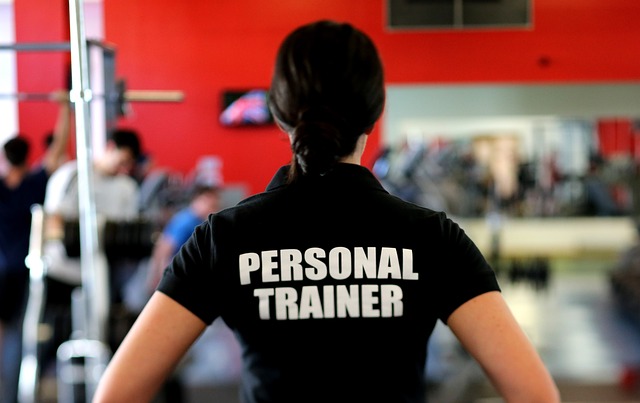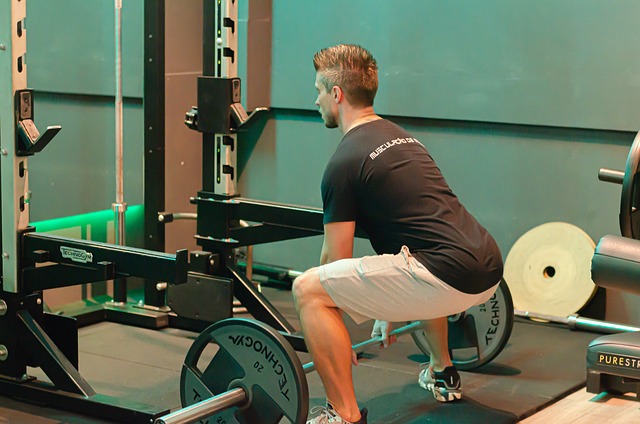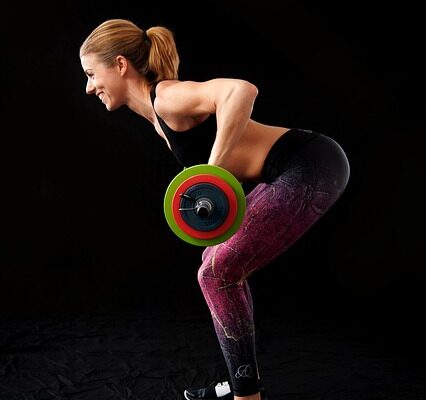Workout for your back to strengthen your lat will not only give your body wonderful proportions but will also provide you with a strong, robust foundation for all of your daily activities.
Your back contains some of the largest muscles in the body, which you use every day to support your spine and body. These muscles, notably the lats, are also part of the core muscles.
The lats are the back’s major muscles. These muscles are in your back and run from the shoulder down to the hips on either side of the back.
Because of this, most back workout involves a pulling or rowing motion. The workouts below demonstrate numerous ways to strengthen the back muscles with dumbbells and resistance bands. Remember that these are huge muscles; therefore, depending on the workout, you can use a heavier weight.
Putting Together Your Back Workout
Make your own lat workout by combining the following suggestions:
Beginners
Pick 1-2 exercises and execute 1-2 sets of 12-16 reps. One-arm dumbbell rows and seated rows with a resistance band are acceptable options. These exercises will target the muscles in a slightly different approach, allowing you to push your body in a new way.
Advanced or Intermediate
Pick from 2-4 different exercises. A dumbbell row, for example, followed by a barbell row and a straight arm pull. To engage your muscles in a new way, try a range of routines using different types of equipment. Rest between sets and do 2-3 sets of 8-12 repetitions.
We create a whole back workout by incorporating upper and lower back exercises.
Employ sufficient weight or resistance to complete the target number of reps.
Precautions and Security
Do not back workouts that hurt your back in any way that creates exceptional pain or suffering beyond what is expected from pushing your targeted muscles.

If you don’t know how to maintain proper form throughout these exercises, don’t practice them until you’ve received instruction from a personal trainer.
Myths
It is a common fallacy that you can execute exercises to target your upper, mid, or lower lats. The latissimus dorsi are two huge muscles that run from your center to your lower back. Because they act as a unit, every movement relies on your lats. In other words, you can’t separate your upper, lower, or mid lats; you can only isolate the entire muscle.
Exercises for the Latissimus Dorsi Muscle
The explanations and directions for the following exercises are provided below:
- Row with one arm and one leg
- Banded lateral pulls
- Rows using barbells
- Pullovers with dumbbells
- Renegade rows
- Pull-ups
- Rows with dumbbells
- Rowing with one arm
- Rowing with resistance bands while seated
- Row with bent-over bands
- Rowing power plank
- Banded dumbbell rows
- Rows with dumbbells alternated
- Pulls with straight arms
- Pullovers with barbells
Row with One Arm & One Leg
Because rowing on one leg adds a balanced difficulty, you’ll most likely utilize a lesser weight.
- To begin, shift your weight to your right leg and tip from your hips, keeping your body parallel to the floor as you straighten your left leg.
- From head to heel, your body should be in a straight line.
- If necessary, grab a wall for support. Pull the elbow up like you are rowing and progressively lower down from this posture.
- If you feel wobbly, lower the leg and rest lightly on your toes, retaining the majority of your weight on the front leg.
Rep 12-16 times on each side.
Pull-ups with Bands
The lat pull with bands is similar to the gym’s lat pull machine. If you want to add more intensity, use a door holder to secure your band in a doorway above you.
- Hold the band overhead and strain your back to draw your elbows down towards your rib cage.
- Hold the band closer together to make it more difficult.
- For a more targeted action, perform this exercise with one arm at a time.
A rep for a total of 12-16 reps.
Rows using Barbells
Dumbbells let you work each side separately, whereas a barbell allows you to lift a larger weight than you would with separate weights.
- Begin by holding the barbell with your palms facing your body and tipping from the hips.
- Make sure your torso is at a 45-degree angle. You don’t want to lower your torso too far because this can strain your back, especially if you’re carrying a lot of weight.
- Take the bar straight out, keeping your legs bent to support your back, and then squeeze your back to pull the barbell in towards your belly button.
- You can also complete this action with your hands out, like in a biceps curl.
Repeat for 12-16 reps.

Pullovers with Dumbbells
Pullovers are an excellent workout because they train numerous muscular groups at the same time—the lats, chest, and triceps. You activate your lower body and core when you do them on the ball.
- To begin, assume a bridge stance while holding a weight straight up overhead.
- Start with a lighter weight if this is your first time doing this technique.
- Lower the weight behind you to around head level or as far as you feel comfortable.
- Keep your elbows slightly bent but keep your arms straight.
- To begin, squeeze the back and slowly pull the weight back
Repeat for 12-16 reps.
Renegade Row Workout for Your Back
- The renegade row works both the core and the lower body, promoting muscle coordination and dynamic flexibility.
- Begin in a plank position on your hands and toes or knees.
- Hold two dumbbells in front of you, palms facing each other. If this causes discomfort in your hands, try only one at a time.
- Maintaining a plank position, alternating rowing each weight up and down for 12-16 reps.
If this is too difficult, try this motion on your knees, keeping your knees directly under your hips.
Pull Ups
Pull-ups should be included in any list of back workouts. Because you’re raising your body weight so far off the ground, these are possibly the most difficult of all back workouts.
- If you’re new to pull-ups, you can vary your movement and gradually acquire the strength to lift your complete body.
- Begin by placing a chair or sturdy stool beneath the pull-up bar.
- Prop one foot (or both feet if necessary) on the chair and pull your torso up with your hands wider than your shoulders.
Repeat for 8 or more reps, alternating between using less of your lower body and more of your upper body.
Try This Alternative Pull yourself up into position with a chair, then carefully lower yourself down without the chair. They are known as negatives, and they are an excellent technique to increase upper body strength.
Rows with Dumbbells
Hinge from the hips for this move, keeping the back flat and the abs engaged.
- The weights (which should be substantial) dangle down, and you strain your back to bring your elbows up to the chest level.
- You want to do this movement smoothly with control.
- The elbows should come to a stop slightly above the torso. Because you’re hunched over with weights hanging down, your lower back has to work extra hard to maintain your body in place.
If you feel a tightness in your lower back, bend your knees and keep your abs engaged.
Repeat for 12 to 16 reps.
Rowing with One Arm
You will be supporting your low back with one hand on the other leg so you can typically go heavier with the one-arm row than with the double-arm row.
- Engage the lats as you lift the elbow up to the chest level for this exercise.
- Squeeze the shoulder blades together at the top to engage more muscles.
Reduce the weight and do 12-16 reps on each side.
Working with Resistance Band While Sitting
Rowing using resistance bands can alter the overall activity. Because the resistance band provides resistance throughout the activity, your muscle fibers will fire differently.
- This maneuver can be done standing or seated.
- Wrap a band around a strong item in front of you and grasp the handles with both hands. Go back far enough so that the band has a demanding tension.
- Squeeze the back to row the elbows to your side, stopping at torso level while keeping the shoulder down.
Repeat for 12-16 repetitions.
Row with Bent Over Bands
Loop the band under both feet and grip the band closer to the feet for this maneuver.
- This allows you to get greater tension in the band than if you held the handles.
- Pull the elbows up into a row, halting at the torso level, with the back flat and parallel to the floor (or as near as you can get).
- This motion is an excellent complement to dumbbell rows, providing a new level of intensity to the exercise.
- A rep for 12-16 reps; this move also works well with tempo changes.
Start with 8 rows, then execute 8 small and slow pulses while keeping the elbows at the peak of the exercise to maximize your time under stress.
Rowing Power Plank
This intermediate practice kills two birds with one stone. The plank exercise works the abdomen, lower back, and legs. Adding a row works the core even harder because you’re balancing the body on one hand while simultaneously working the lats.
- Begin in a plank position on your hands and toes, with your feet wide.
- Make this motion on your knees for a variation. Pull the elbow up into a row while holding a kettlebell or a dumbbell.
Descend and repeat for 12-16 reps while remaining in a plank position. Take a rest before switching sides.
Banded Dumbbell Rows
Combining weights and resistance bands is an excellent approach to increase the intensity of your lat practice.
- Begin by wrapping the band around a pair of dumbbells and looping it under your feet. Check if you can safely hold each weight without dropping it.
- With the addition of the band, you may want to go lighter on the weights.
Row up and down with the weights for 12-16 reps, tipping from the hips and keeping the back flat and abs in.
Rows with Dumbbells Alternated
Alternating from right to left is one way to spice up regular dumbbell rows. This engages more of your core and allows you to focus on one arm at a time.
- To begin, a tip from the hips while keeping the back flat.
- Gently bend the right elbow and bring it up to the level of the body.
- Lower, then raise the left elbow into a row.
Switch between 12-16 reps, taking your time with each rep.
Pulls with the straight arm
This workout is not only for you back but it also benefits your triceps. When you’re balancing on the ball, your lower back and legs are working hard to keep your body stable.
- Anchor a band around a substantial item in front of you, then position yourself with the ball under your body.
- Make sure the band is taut by standing far enough away from the anchor.
- Begin with your arms straight out in front of you, then bring them down and back behind you, gripping the back.
A rep for a total of 12-16 reps.
Pullovers with Barbells
The use of a barbell significantly increases the intensity of this workout for your back. Unlike dumbbell pullovers, you should keep your elbows bent the entire time to avoid going too far and dumping the weight.
- Begin on a bench with the barbell held close together just over the ribs.
- Lift the weight and bring the arms back behind the head while keeping the elbows bent.
To begin, squeeze the back to draw the barbell back, then repeat for 12-16 reps.
To Conclude
You must comprehend the significance of back strength and its involvement in daily activities. A strong back stabilizes you, offers you good posture and balance, and reduces your risk of injury. To strengthen your back, try any of the exercises described above.

